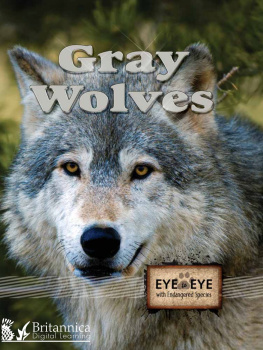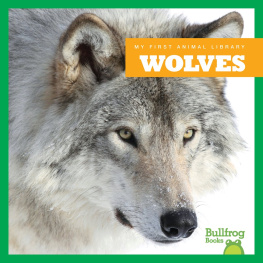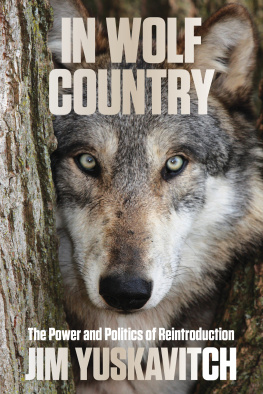ISBN 978-1-62513-720-3 (e-book)
e-book 2020 Encyclopdia Britannica, Inc. Britannica, Encyclopdia Britannica, and the Thistle logo are
registered trademarks of Encyclopdia Britannica, Inc.
2011 Rourke Educational Media
All rights reserved. No part of this book may be reproduced or utilized in any form or by any means, electronic
or mechanical including photocopying, recording, or by any information storage and retrieval system without
permission in writing from the publisher.
www.rourkeeducationalmedia.com
PHOTO CREDITS: Cover: gkuchera; Title Page: Korzeniewski; Page 3: Cybernesco; Page 4: Tormentor,
Scattoselvagio; Page 5: Rambleon; Page 6, 8, 9: Jensklingebiel; Page 9: Hkuchera, Outdoorsman,
jimkruger, silksatsunrise; Page 10: Freder; Page 11: DoucetPhiStock/Getty Images Plus, Jessica
LeeEyeEm/Getty Images, davemhuntphotographyiStock/Getty Images Plus, John TaylorEyeEm/Getty
Images, Grigorii_PisotckiiiStock/Getty Images Plus, Colin Carter PhotographyMoment/Getty Images;
Page 12: Zebra99, CDH_Deisgn, filo; Page 13: Saipg; Page 14: Chrislorenzs, jimkruger; Page 15:
Jamie Ferrant; Page 16, 17: Jgrabert; Page 17: Keramsay, Outdoorsman; Page 18, 19: Les Palenik;
Page 19: Rodehi; Page 20, 21: Moori; Page 22: Chris Alcock
Editor: Precious McKenzie
Cover and Page design by Teri Intzegian
Library of Congress Cataloging-in-Publication Data
McLeese, Don.
Gray wolves / Don McLeese.
p. cm. -- (Eye to eye with endangered species)
Includes bibliographical references and index.
ISBN 978-1-61590-271-2 (Hard Cover) (alk. paper)
ISBN 978-1-61590-511-9 (Soft Cover)
1. Wolves--Juvenile literature. I. Title.
QL737.C22M386 2011
599.773--dc22
2010009902
Rourke Educational Media
Printed in the United States of America,
North Mankato, Minnesota

.................
...............
..............
.........
.......
....
.....
.....
...................
.....................
Table of Contents
Does your family have a dog? Then you live with
a relative of the gray wolf! Wolves and dogs belong
to the same family of animals, the Canidae.
Long before there
were dogs, there
were wolves. Wolves
have been around
for hundreds of
thousands of years.
Some wolves were companions to
humans before the dog. Dogs
were from
wolves only about 12,000
years ago. Even though
wolves and dogs have a
lot in common, there are
also big differences!
The gray wolf
is the largest
wild member of
the Canidae family.

Chapter 2
Dogs have been domesticated and are usually
friendly. Wolves live in the wild. People consider
wolves very dangerous. People often call dogs
mans best friend.
Even fairy tales,
such as
The Three
Little Pigs
and
Little
Red Riding Hood
,
teach us about the
big bad wolf. Is the
wolf really bad?
When a wolf bares its teeth
like this it is a warning
that it might attack.
Wolves communicate with each
other by howling, growling, and other
vocal sounds. Their howls can be heard as
far as 10 miles (16 kilometers).

Chapter 3
Wolves live and travel together in a pack, or family.
A wolf
has five to ten members. The father wolf,
or
male, leads the pack. His female mate is the
mother wolf, or alpha female, of the pack.
Mother and father wolves usually stay together for
life and raise their pups, or . The pups stay
with the pack for a few years before leaving to start a
pack of their own.
Here are an alpha male and
female gray wolf in the Rocky
Mountains.
The adult wolf guards the
playful pup.
Pups watch and learn from
their parents.
A wolf concentrates and readies
itself to capture its prey. The wolf
shares its prey with its pups.
Wolves have a keen sense
of smell, which they use to
hunt their prey.
Wolves are .
Wolves hunt other animals in
order to survive. But wolves
arent picky eaters. They also eat
carrion, or dead animals. When
its time to eat, the alpha male
gets first choice followed by the
alpha female. Then the offspring
fight over whats left.

Animals that Wolves Eat
Wolves cause fear in humans. But wolves usually
shy away from humans. However, wolves cause trouble
when they eat farm animals. In the United States,
humans killed so many wolves that they became an
. A few thousand gray wolves
remain in the lower United States. Most of them live in
the Great Lakes region and in the northern Rockies.


























